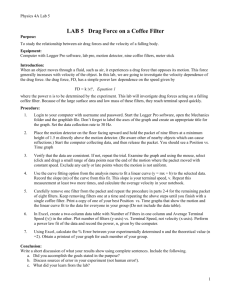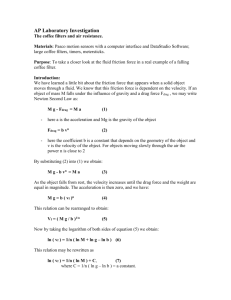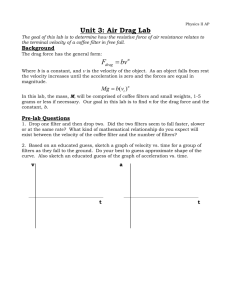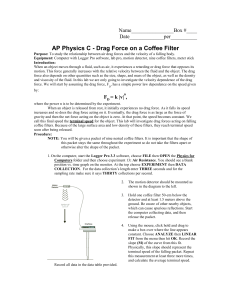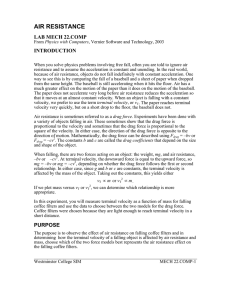Coffee Filters Lab
advertisement
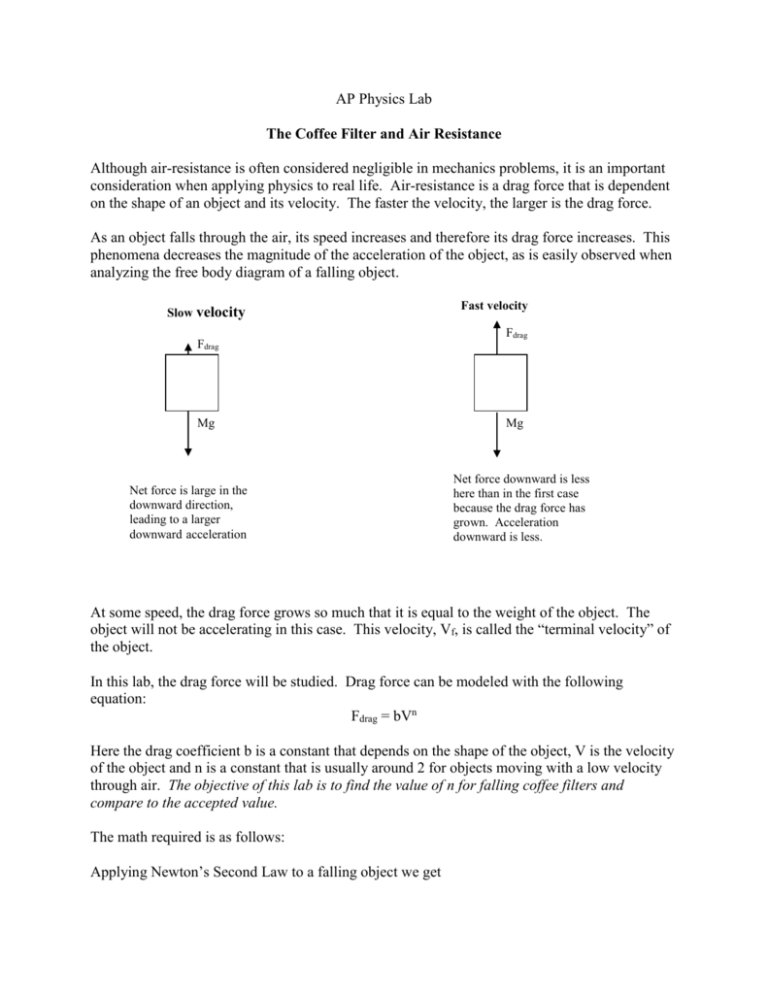
AP Physics Lab The Coffee Filter and Air Resistance Although air-resistance is often considered negligible in mechanics problems, it is an important consideration when applying physics to real life. Air-resistance is a drag force that is dependent on the shape of an object and its velocity. The faster the velocity, the larger is the drag force. As an object falls through the air, its speed increases and therefore its drag force increases. This phenomena decreases the magnitude of the acceleration of the object, as is easily observed when analyzing the free body diagram of a falling object. Slow velocity Fdrag Mg Net force is large in the downward direction, leading to a larger downward acceleration Fast velocity Fdrag Mg Net force downward is less here than in the first case because the drag force has grown. Acceleration downward is less. At some speed, the drag force grows so much that it is equal to the weight of the object. The object will not be accelerating in this case. This velocity, Vf, is called the “terminal velocity” of the object. In this lab, the drag force will be studied. Drag force can be modeled with the following equation: Fdrag = bVn Here the drag coefficient b is a constant that depends on the shape of the object, V is the velocity of the object and n is a constant that is usually around 2 for objects moving with a low velocity through air. The objective of this lab is to find the value of n for falling coffee filters and compare to the accepted value. The math required is as follows: Applying Newton’s Second Law to a falling object we get Mg-Fdrag = Ma At terminal velocity, Mg = Fdrag = bVfn Solving for V and taking the natural log of both sides: ln(Vf) = (1/n)[ln(M) + ln(g) –ln(b)] ln(Vf) = (1/n)(ln(M)) + Constant We can measure the terminal velocities corresponding to various masses of an object. Analyzing the above equation, if ln(Vf) is plotted against ln(M), we should get a straight line with a slope = (1/n). The problem with varying the masses is that the drag coefficient depends on the size and configuration of the object. This is why the experiment cannot be performed by dropping a pingpong ball, a golf ball and a bowling ball. By dropping stacks of coffee filters consisting of one, tow or more filters, the mass of the falling object is varied while keeping its size and configuration approximately the same. Procedure: Drop 1 coffee filter from as large a drop as possible and time the drop. Since the coffee filter is very light, it will reach terminal velocity very quickly and the terminal velocity can be found by dividing total distance fallen by time of fall. (Assumption is that terminal velocity is reached immediately. This will be less likely with more mass i.e. more coffee filters.) Vary mass of the object and measure new Vf values by increasing the # of coffee filters dropped (1, 2, 3 and 4 coffee filters). Plot ln(Vf) versus ln(M) where mass is in units of # of coffee filters. Determine value for n from the slope of the graph. Give a percent error with the accepted value.


